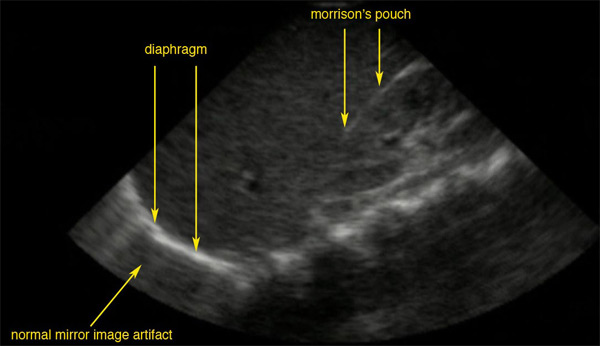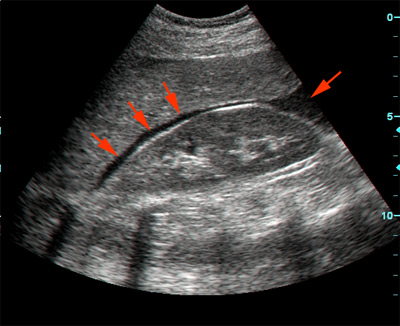Morrison's pouch
Editor-In-Chief: C. Michael Gibson, M.S., M.D. [1]
Please Take Over This Page and Apply to be Editor-In-Chief for this topic: There can be one or more than one Editor-In-Chief. You may also apply to be an Associate Editor-In-Chief of one of the subtopics below. Please mail us [2] to indicate your interest in serving either as an Editor-In-Chief of the entire topic or as an Associate Editor-In-Chief for a subtopic. Please be sure to attach your CV and or biographical sketch.
Morrison's pouch is the eponym for the hepato-renal space, named for British surgeon James R. Morrison (1853 - 1939).
Morrison's Pouch is primarily a potential space, meaning that in the state of normal function, there is no separation between the capsules of the liver and the right kidney. However, this space becomes significant in conditions in which fluid collects within the abdomen (most commonly, ascites and hemoperitoneum).
The intra-peritoneal fluid can be blood, ascites, or dialysate.
Collects in this space and may be visualized, most commonly via ultrasound or Computed Tomography (CT) scanning. As little as 30 or 40 mL of fluid in the abdominal cavity may be visualized in this space.
The medical significance of this space primarily lies in the circumstance of hemorrhagic shock due to hemoperitoneum. Early visualization of fluid in Morrison's Pouch on FAST Ultrasound is an indication for urgent laparotomy.
- A normal ultrasonographic view of Morrison's pouch. The bright line is the capsule of the kidney; there is no fluid present and hence no visible space.
- Morrison's pouch with fluid present (red arrows).

